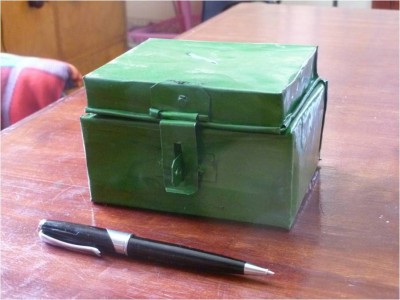Finding the Right Knot for Each Odysseus: Innovations in Commitment Savings
This blog was originally posted on the USAID Microlinks Blog after Aishwarya Ratan's presentation at their After Hours Seminar #61, "Matching Products with Preferences: Innovations in Commitment Savings for the Poor."
Most people, regardless of age or socioeconomic status, find achieving financial goals for themselves and their families challenging and often don’t save as much as they’d like. The consequences of sub-optimal saving can be grim, but they are particularly severe for the world’s poor and financially excluded. In the absence of savings, the poor are often forced to resort to far more costly alternatives to finance their goals, like high-interest debt. Therefore, finding innovative ways to help the poor save more is a policy imperative and was the subject of a lively and interesting seminar presented by USAID Microlinks on May 16 in Washington, DC. The seminar discussed results from several research projects that used randomized controlled trials to evaluate savings product innovations for the poor in Kenya, Malawi, and elsewhere. It featured an introduction from Aishwarya Ratan (Yale University), presentations from Professor Jessica Goldberg (University of Maryland) and Professor Jonathan Robinson (University of California at Santa Cruz), and moderated by USAID’s Jason Wolfe.
financially excluded. In the absence of savings, the poor are often forced to resort to far more costly alternatives to finance their goals, like high-interest debt. Therefore, finding innovative ways to help the poor save more is a policy imperative and was the subject of a lively and interesting seminar presented by USAID Microlinks on May 16 in Washington, DC. The seminar discussed results from several research projects that used randomized controlled trials to evaluate savings product innovations for the poor in Kenya, Malawi, and elsewhere. It featured an introduction from Aishwarya Ratan (Yale University), presentations from Professor Jessica Goldberg (University of Maryland) and Professor Jonathan Robinson (University of California at Santa Cruz), and moderated by USAID’s Jason Wolfe.
The innovations at the heart of the studies were fairly simple – a savings lockbox where users do or do not have the key, a passbook account label, such as “daughter’s wedding” or “school fees,” or a withdrawal-restricted account until a pre-specified date or an amount was reached. These features are examples of commitment devices, or ways to help overcome competition from short-term demands on an individual’s long-term preferences (e.g. retirement savings). Competing demands could come in the form of expectant social networks or even an individual’s own impatience and lack of self-control. The literature likens commitment devices to the Greek hero Odysseus, who, in advance of hearing the Siren’s beautiful but deadly song, had himself tied tightly to his ship’s mast to avoid certain death.
The projects presented by Jessica and Jonathan revealed a positive, but complex impact story behind commitment savings products. In the case of the Malawi study, which focused on tobacco farmers, a commitment savings account along with an ordinary savings account led not just to higher savings balances but also to increased investment in agricultural production and higher profits for farmers. In the case of the Kenya study on healthcare savings, a “less rigid” commitment device, in the form of a safe box where the key resides with the ROSCA, achieves better impact in terms of savings accumulated to fund health expenses compared to a “more rigid” lock box, where the key was inaccessible to the group. This study highlighted a variety of commitment devices including the use of one’s peer group as a commitment-inducing and enforcing support structure.
The challenge now is to identify in which context, for whom, when, and what type of commitment savings and/or payment product might work best. This will require extensive iterative research of new designs and rigorous replications of promising products, such as the ones tested in Malawi for agricultural savings and in Kenya for healthcare savings. The researchers have yet to pin down a definitive explanation of the mechanisms behind the effectiveness of various commitment products, such as whether evidence of savings was due to “tying of the hands” or “mental accounting.” The seminar was successful in discussing the encouraging findings revealed so far and in identifying new research needed to unearth additional compelling, robust, welfare-enhancing results that can then guide policy and practice moving forward.











